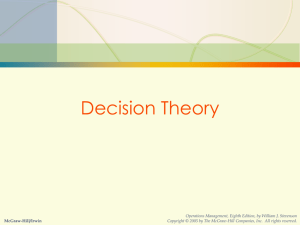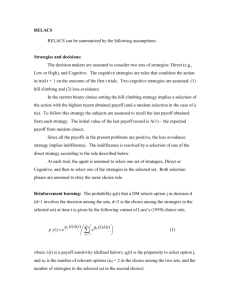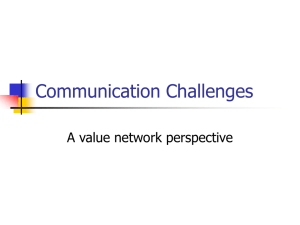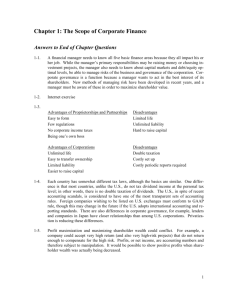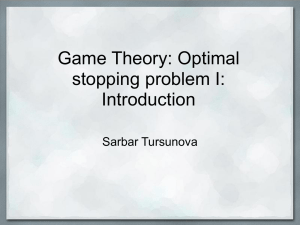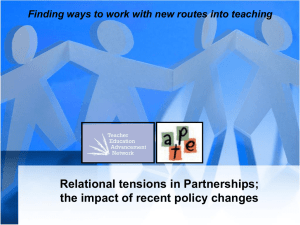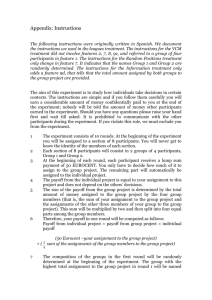Trust in School - PLC Washington / Homepage
advertisement
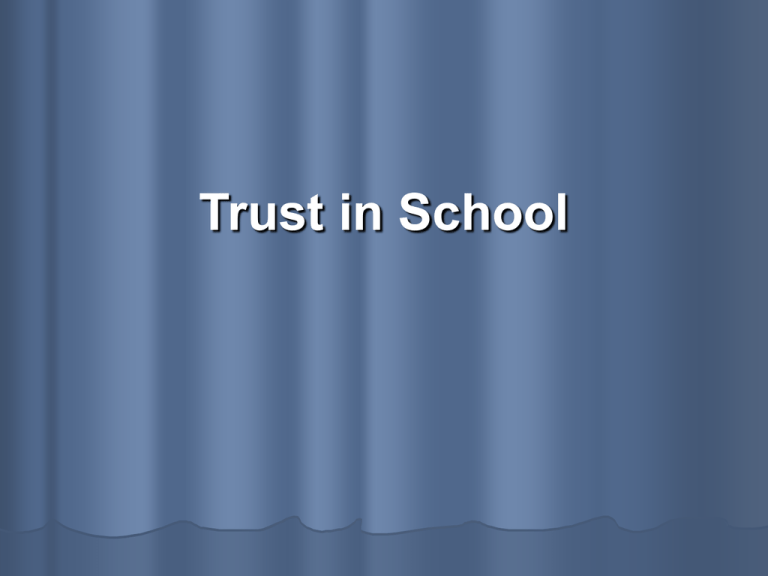
Trust in School Trust Human beings can fix anything with enough time and enough duct tape Except Trust Trust If you had to explain trust to someone who had not heard the word, what would you say? • Write independently-5 minutes • Share with a partner-5 minutes • Make a list of the qualities of trust you identified School Improvement Schools improve when the staff shares the common belief in the nobility of their profession and value the dignity of each other, students and student’s families. Relational trust is essential to the development of these common believes and values Changes • Make a list of 3-5 changes that you have seen in the past three years at your school or in your district. Differentiating Change from Transition • Change is not the same as Transition • Change is external, Transition is internal • Transition is the psychological process people go through to come to terms with the new situation • Unless Transition occurs, Change will not work -Based on the work of William Bridges Vision Skills Resources Payoff Action Plan Change Vision Skills Resources Payoff Action Plan Sabotage Trust Vision Skills Resources Payoff Action Plan Confusion Trust Vision Skills Resources Payoff Action Plan Anxiety Trust Vision Skills Resources Payoff Action Plan Anger Trust Vision Skills Resources Payoff Action Plan Sporadic Change Vision Skills Resources Payoff Action Plan Trust Trust False Starts Tradition does not imply trust of any kind, this is so because tradition, as long as it prevails, may substitute for trust…when tradition stops playing a major role TRUST BECOMES CRUCIAL Piotr Sztompka,1999 Relational Trust Interdependent Work Environment Cooperation/Collaboration TRUST Competence, Integrity, Respect, Regard The Importance of Trust • Strongest Level Of Trust: 1 in 2 chances of making significant improvements in student learning • Weakest Level of Trust: 1 in 7 chances of making significant improvements in student learning - Bryk and Schneider Trust in Schools: A Core Resource for Improvement Structures/Behaviors that don’t build trust Distrust among parents, teachers, and administrators Suspicion of “outsiders” Tensions pertaining to race, ethnicity, age cohort--predisposition to factions Generalized anger--patterns of withdrawal “Happy Talk” Poor internal communications Institutional inability to learn from experience Ego fragility/emotional fatigue Teacher isolation Trust becomes an indispensable strategy to deal with the opaqueness of our social environment. Without trust we would be paralyzed and unable to act Types of Trust in Schools Contractual Organic Social Relational Contractual Trust Contractual trust is based on delineated agreements. People trust that others will follow the agreement. Because staff members in a district work on contracts there is some of this expectation in schools. Because contracts can not delineate everything that happens in schools this trust is commonly thwarted when people hold differing views of what it means to follow a contract Organic trust This form is described as a sense of affinity between people who hold something in common that is bigger than themselves. What is held in common may be beliefs, experiences, hopes, or other activities that provide meaning in their lives Social Trust This form of trust is based on the idea that trust has a value similar to money. It can accumulate or deplete. You can use it all in one place or save it up. You can spread it over many people or hold it all for yourself. While it is a way to think and talk about trust it was not this form of trust that mattered in improving schools Relational Trust This form of trust is discovered through interactions. Participants in the interaction either increase trust through the interaction or decease trust through the interaction. If people do not interact there is no opportunity to generate trust. Relational Trust Role expectations People know what to expect of one another Understanding of the characteristics of trust During interactions participants demonstrate competence, integrity, personal regard and respect Demonstration in routine behaviors The demonstration of the characteristics above is routine behavior Role Expectations Clarify our core values is the first step in clarity of role expectations. Once we are clear about what we believe the goal of our work is we can clarify what we expect from each other in achieving our goal Respect Genuine interest in the other person’s point of view Integrity What you say, do and believe are aligned Personal Regard Acknowledge your feelings and the feelings of others Own your part Consideration of others Competence Faith in your own abilities and in the abilities of others Routine Behaviors Creating norms in behavioral terms What does respect “look like”? What does integrity “look like”? What does personal regard “look like”? What does competence “look like”? Answering these questions creates a culture which nurtures trust. What are the elements of Relational Trust? Role Expectations clarified Respect Integrity Personal Regard Competence Creating a trustful environment will move your school from independent practice to Interdependent Relationships • • • • • • From me to us From some of the student to all of the students From my students to our students From my classroom to our school From my lesson to our lesson From my way to our way

